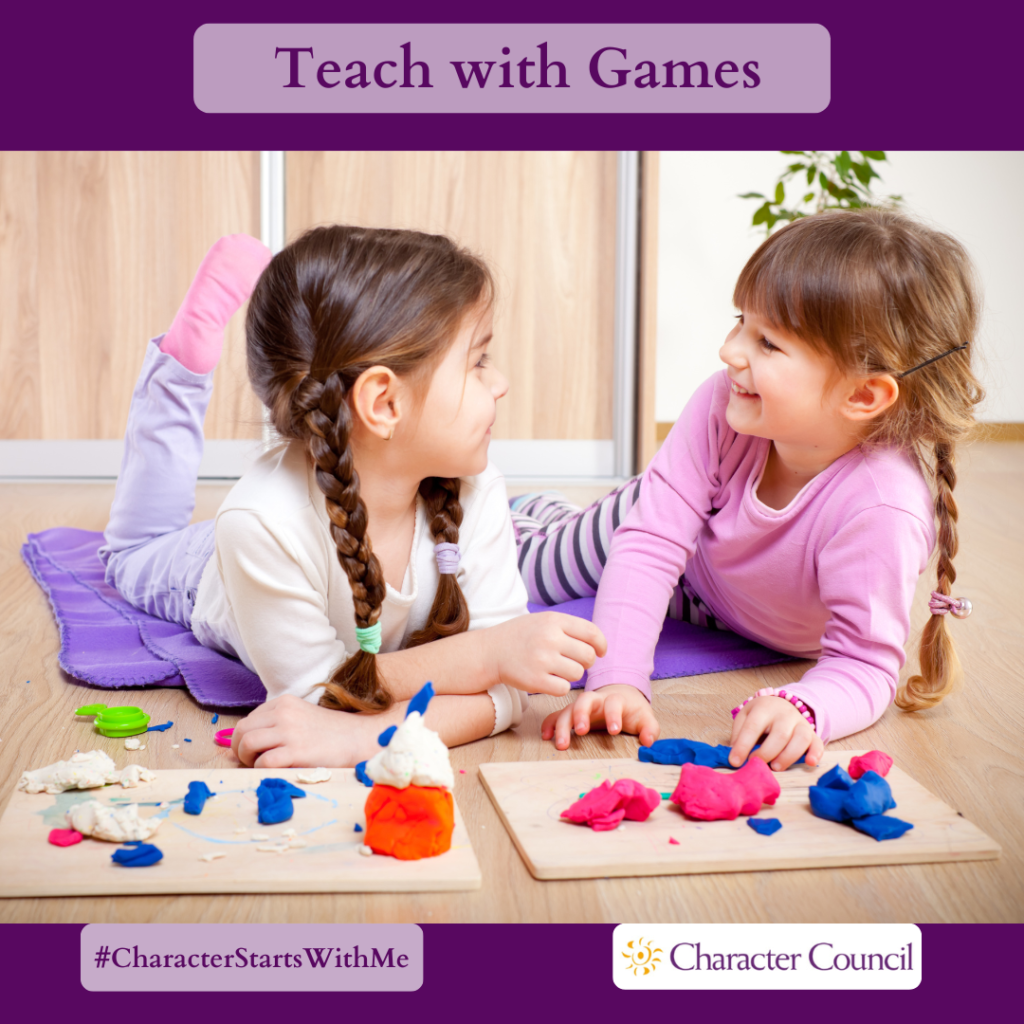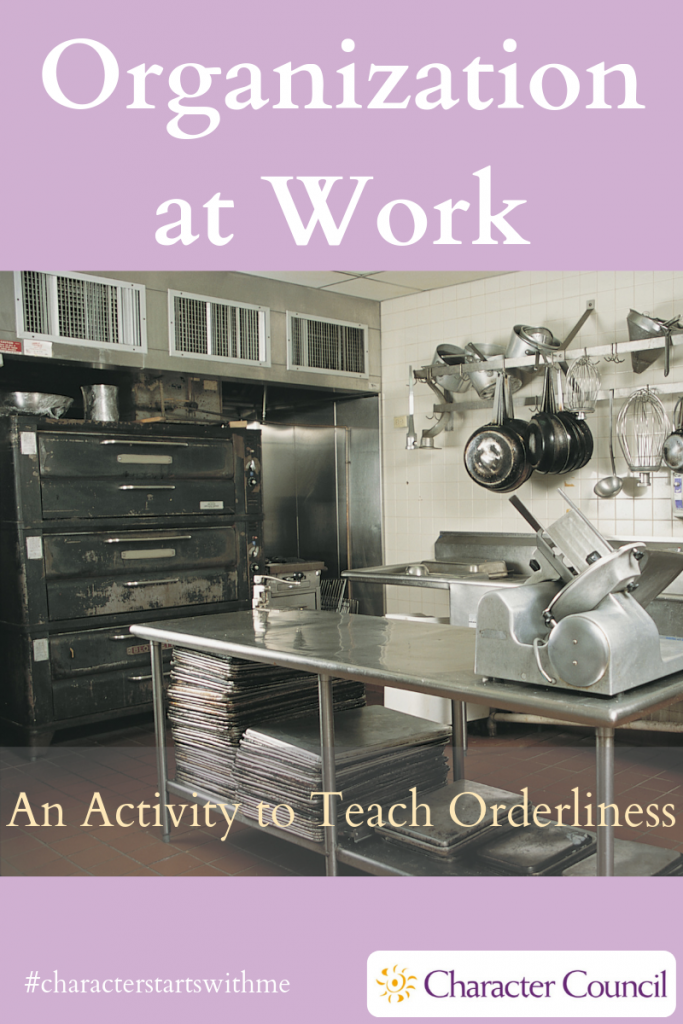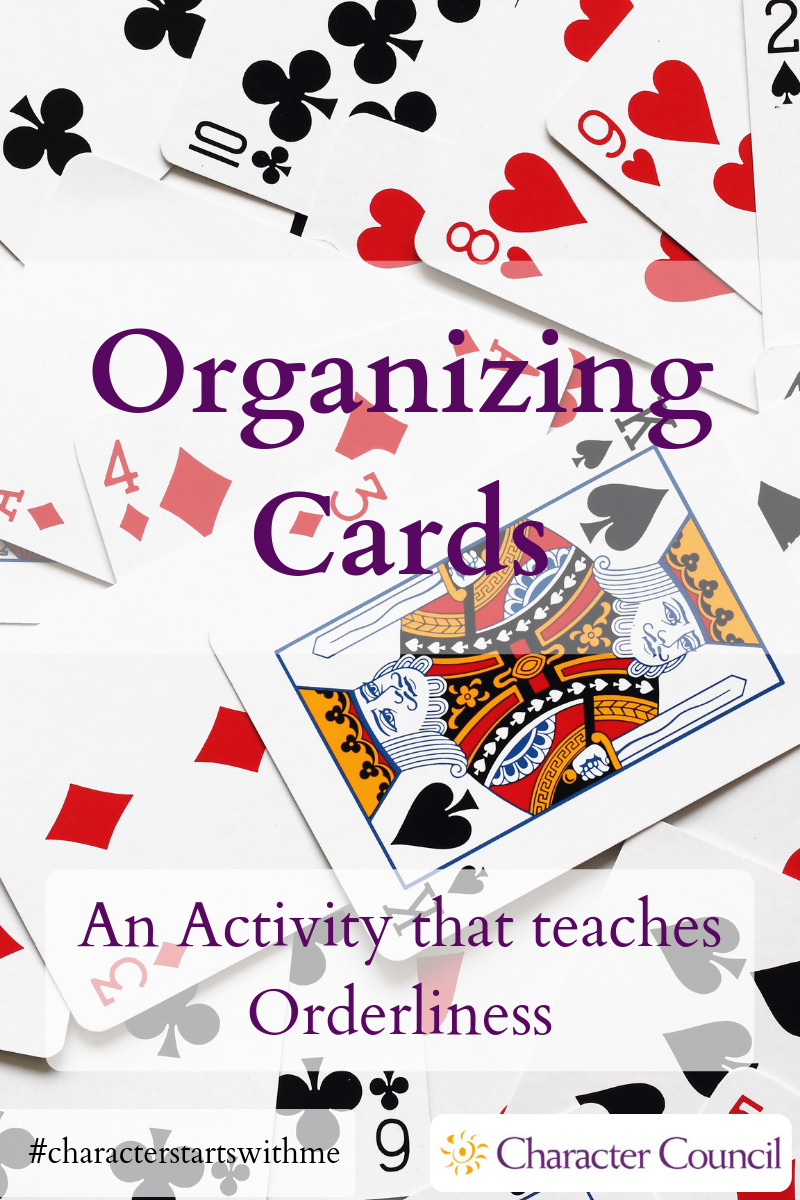
Orderliness Activities
The activities here are fun ways to teach character. The game aspect makes the lesson more memorable. Each activity has processing questions at the end. Without processing the activity, the exercise is just a game. To make it a stronger lesson when you process it, relate the character quality to a core value that your organization promotes.
Consider picking a student to run the activity. You will need to give them time ahead of the activity to prepare. Another option is to pick a few students to run the activity for a younger classroom after you have run it for your class. Encourage your students to repeat it in the home for younger siblings or even parents.


Mix it Up
Another way to help students to understand and appreciate order is to create dis-order in the classroom. Make some changes in the classroom that show disorganization. Ask students to get things from their normal place and be flustered when the item is not there. Do this for several items in a row until they get the idea that the misplaced items were on purpose. Ask them to look around and see what else is amiss. Have them help in setting the classroom back to the way it should be. Sometimes students will take your carefully ordered space for granted. This gives them a way to appreciate your orderliness. End the activity by having them organize their desks/lockers. Hold a discussion on ways to best organize study spaces. If they have desks at home, are they organized? What are some ways you can bring order to a space and make it easy to maintain that order so that a month from now the space is still orderly? One of the quotes for this month is ““Cleaning and organizing is a practice not a project.” By Meagan Francis. Discuss this quote regarding the practices needed to keep the classroom space and their personal space orderly.
To process this activity, ask these or similar questions:
- Were you surprised when you couldn’t find things in their normal place?
- Do you have an appreciation for being able to find what you want when you need it?
- What habits do you need to have to keep things orderly?
- Does it make you want to put things back when you are done?re?

Organization at Work
Make a class assignment for the students to talk to their parents and get tips on how to organize time and space. You can then have students share these tips with each other, either in a class discussion or by the students sharing one a day. You may wish to include questions about how order is important in the careers/jobs of the parents. Where are a surgeon’s tools when they begin an operation? What about a repairman’s tools? How are offices organized? – you can refer to the school office for examples. Set up a tour of the kitchen area in the school cafeteria with the person in charge of that area. Ask for explanations on how food and equipment is organized, labeled, and stored. How do they know food is still good to serve? Why is it bad to store a cleaning product next to a food product or a raw meat product on a shelf above a raw fruit product? Discuss why this order is important for food safety and efficiency. It may not be feasible for the whole class to take the tour so you may have to send a few kids who can take pictures or a video to share with the class. What about touring or sending a group to visit the janitor’s “behind the scenes” area or the nurse’s room?
To process this activity, ask these or similar questions:
- Was it fun to see behind the scenes in some of the places around the school?
- How important was it for these areas to be organized?
- What problems can occur if they were not well organized?
- Can you come up with any jobs where you do not need to be orderly?
- Do you think practicing being orderly now can help you be a better employee later?

Organizing Cards
Divide the students into small groups of 4 – 7 students per group. Give each group a deck of playing cards. The only instruction is that they are to organize (sort) the cards. You may also use half-decks if time is an issue. When each group is done, compare the different strategies for sorting. Did they sort by color, suit, number vs. face card? Did they hear what the other groups were talking about and all do the same thing? How confident are they that they did the right thing? Point out that to organize or sort something they need to know how an item will be used. Whatever the rule they used to sort the cards is correct if they consistently applied the same rules to all of the cards and that each card could only fall into a single category. Use the items in the classroom to discuss why things are sorted together. Are all the art supplies together (sorted by purpose). Is the garbage can by the door? (convenient for janitor to empty). Why wouldn’t you put all the purple things in the room together? Are all your books for your afternoon classes together in your desk? (based on when they are used).
To process this activity, ask these or similar questions:
- Was it difficult to sort when you didn’t know why you were sorting?
- How difficult would it be to find things if we didn’t organize them or organized them on the wrong criteria?
- Will you remember the card sort activity the next time you have to organize something?